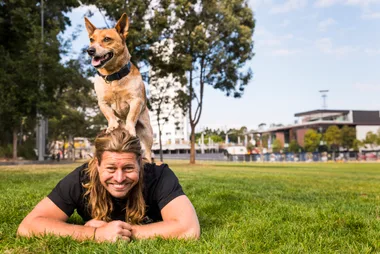Getting a new puppy isn’t, and shouldn’t, be as simple a matter as heading off to the local RSPCA or pet store and selecting the one that best takes your fancy. Before you start puppy shopping you should seriously consider what factors will help you find the right fit not only for your own, but also the dog’s, essential needs.
“The wrong choice can be horrendous,” says Val Edwards, director of Bark Busters Australia.
“We see many people who have made the wrong choice and while we can turn many dogs around we believe that prevention is better than cure,” she says.
“The wrong choice of dog can turn out to be a dog that is destructive, especially if it spends too much time alone, and can cause families a lot of unhappiness and anguish, whereas the right dog will bring years of happiness and joy and can become an integral part of the family.”
Edwards believes the single most important factor to consider is how much time you can devote to the dog’s training and education. Knowing this can help determine whether you should consider a full-grown dog as opposed to a puppy.
Other key things to think about include the size of your home and garden; the age of the children in the family (small children can be overwhelmed by a large dog); your budget and the cost of health care and insurance; the dog’s training needs and method of training; and whether or not you will need to buy two dogs for companionship.
John Harkin, canine behavioural consultant and professional dog trainer from AUSDOG says that most people don’t put nearly enough time into researching the right selection and that it can be hard to do so because “rarely will you ever find a critique written about a breed that does not say they are a fantastic dog”.
“Most are fantastic, but for what? Border collies were bred for herding, beagles for hunting, golden retrievers for retrieval, huskies for pulling sleds,” Harkin says.
“All the above are good dogs but do you have anything for them to do to occupy their minds short of a boring walk around the block or a half hour running in the park?” he says.
“Twenty-four hours is a long time for a dog that has been bred to do something to do nothing, and then people wonder why dogs spend their time barking and being destructive.”
His best advice is to give it a lot of thought and speak with many dog owners and professionals. Consult vets, dog trainers, groomers, and kennel proprietors that handle and work with a multitude of breeds and have the opportunity to observe breeds in many different environments.
“The big plus is if you put in the time and effort to select the right dog, you will never have a better friend for you and your family for many years to come,” Harkin says.
Best breeds for families include:
Newsletter conversion description. Get the latest in your inbox.









.png?resize=380%2C285)
.jpg?resize=380%2C285)




.png?resize=380%2C285)

































